One of the most poignant shipwreck images that I have ever seen is the photograph by F.W.Gibson of the temporary grave of Rear Admiral Sir Clowdisley Shovell in the Scilly Isles. His body had been found floating in the shallows along with many others during October 1707 in the aftermath of one of the greatest maritime disasters England had seen. Four ships and two thousand men had been lost on the Scilly Isles’ treacherous rocks and once again the main cause of the disaster was the navigators inability to accurately calculate their Longitude. This was not due to their carelessness, but to a lack of proper compasses (most were not made of brass and so rusted up at sea) and a clock that could keep accurate time at sea. The only good thing to come out of the Association disaster was that it speeded up the search for a method of accurately discovering Longitude. The best brains in the land including Isaac Newton and Edmund Halley (he of the Comet) were put on the case, and a prize of ?0000 was offered, a colossal sum for those days. In the end it was a clock maker called Edward Harrison who collected the prize, but it took him until 1773 to perfect the chronometer, and his various clocks, one made entirely of wood (with all the working parts) can still be seen at the Maritime museum in Greenwich.
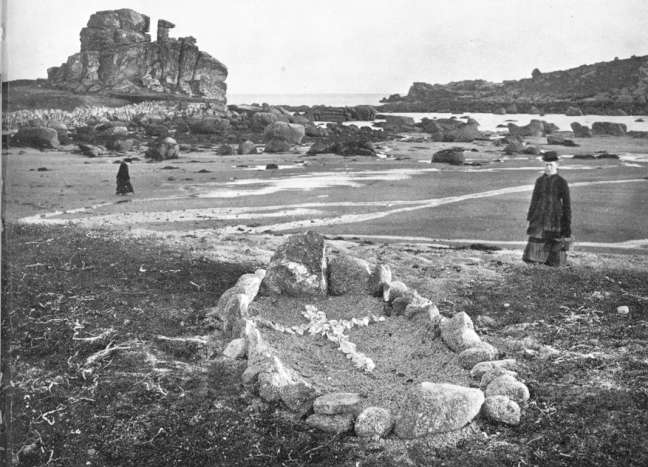
So what of the Association that caused this entire furore? On the 29 Sept 1707 twenty-one Men of War were at anchor at Gibraltar getting ready to sail back to Britain. The Commander in Chief of this Mediterranean Fleet was rear Admiral Sir Clowdisley Shovell, on board his flagship Association. All that summer Sir Clowdisley and his Fleet had harassed the French and laid siege to the port of Toulon. The sea bombardment of Toulon had been extensive but frankly hadn’t been all that effective because of the huge earthworks that had been thrown up all around the town. The wear and tear on the ships was relentless, and as the winter approached it was time to return to the safety of England where there were suitable dockyards to effect repairs and somewhere to escape the coming storms.

The Fleet headed out into the Atlantic and set course for the English Channel. Almost immediately the weather worsened and by the 21 October the storms had pushed the ships well of course. By now they should have been somewhere off the entrance to the Channel, but were in fact approaching the Scilly’s. The Fleet’s sailing masters realizing they were lost hove too to take depth soundings. The depth varied from 300 feet to over 800 feet, so the Fleet, thinking they were still near the Channel blundered on unknowingly towards the Islands. The next day the storms seemed to be worse, and all the time the ships were being driven closer to the land. At eight o’clock in the evening of the 22 October the Association smashed into the Outer Gilstone Ledges at the South Western edge of the Scilly Isles. The entire crew perished as the ship disappeared in a welter of broken wood and angry sea’s. Following behind the Association was the St. George. She struck the same rocks as the Association but managed to bounce of only loosing part of her stern gallery. Three other ships were not so lucky.
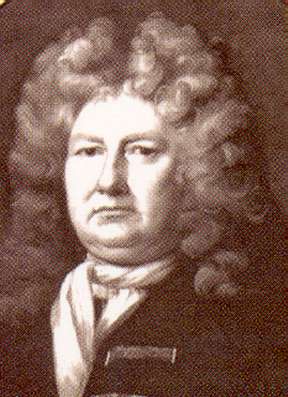
The seventy- gun Eagle ran into the Tearing Ledge close to the Bishop’s Rock (no light house in those days) and sank in 130 feet. The Romney disappeared with out trace, her timbers mixed with all the others that had come to grief on the Rosevere Ledges, and the Firebrand, staggering along the southern side of the Western Rock finally sank between Annet and St. Agnes Islands. The last ship the Phoenix ran ashore between Tresco and St. Martins. All in all, four warships, over two thousand men and a famous Rear Admiral were lost. The nation was stunned.
The finding of the Association by a Royal Navy diving team (featuring Richard Larn) and the subsequent salvage of a vast amount of silver coins by Terry Hiron and Jim Heslin have been well documented. I was lucky enough to meet them both, and have a dive on the Association back in —– In those days Terry and Jim used to allow visiting divers access to the site to help with the donkey work. It was a great experience and although I never found any coins I did help re discover a cannon.
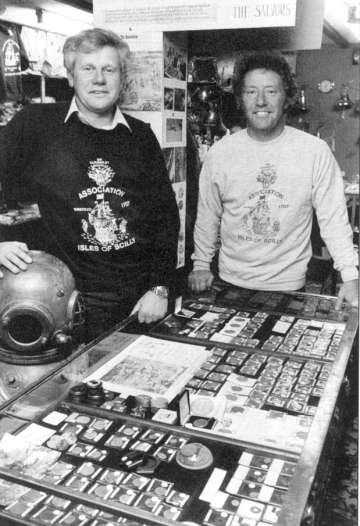
So what became of Sir Clowdisley Shovell? Local legend has it that he was still alive when he was washed ashore, and that he was murdered by two women for a large emerald ring that they hacked his finger off to get. The truth is probably less lurid. The Admirals body was found washed up in a sandy bay near Porth Hellick almost seven miles from where the Association was wrecked. A local fisherman, Harry Pennick pulled him in, and found a tin box in his pocket, which contained the Admirals Commission. The body was then temporarily buried on the beach near where it had been found. By order of Queen Anne the body was later exhumed, embalmed by a Dr. Yonge of Plymouth (no mention of missing fingers) and given an elaborate funeral with a memorial in Westminster Abbey to mark his place in the Nation’s esteem. You can easily find it in the south aisle near the choir and very fine it is.
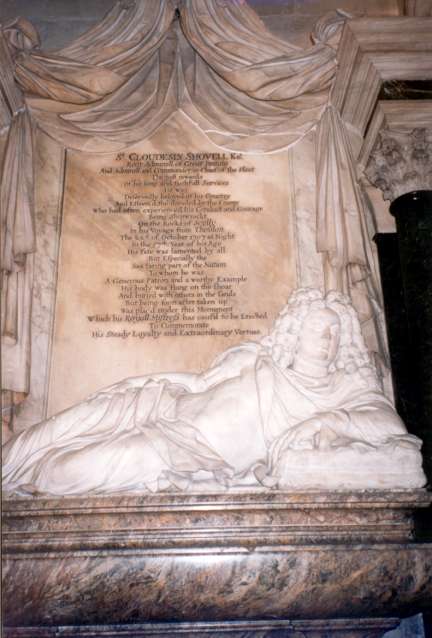
The inscription reads:
Sir Cloudesley Shovell Knt. Rear Adrnirall of Great Britain and Adrnirall and Commander in Chief of the Fleet. The just rewards of his long and faithful Services. He was deservedly beloved of his Country and Esteem’d tho’ dreaded by the Enemy, who had often experienced his Conduct and Courage. Being shipwreckt on the Rocks of Scylly in his voyage from Thoulon. The 22nd of October 1707 at Night in the 57th year of his Age. His fate was lamented by all, But especially the Sea faring part of the Nation to whom he was a Generous Patron and a worthy example. His body was flung on the shoar and buried with others in the sands, but being soon after taken up was plac’d under this Monument which his Royall Mistress has caus’d to be Erected to commemorate His Steady Loyalty and Extraordinary Vertues.

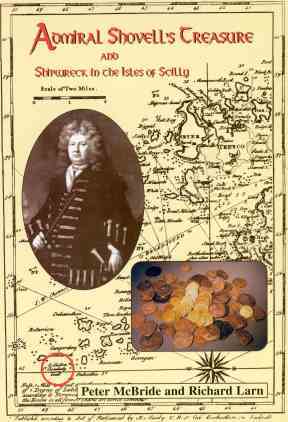
mike says
Just dropped you a line as I have just delivered a bronze cannon to auction that came from the Association.
It will be sold in July at Drewitt and Neate auction house in Newbury
Regards Mike Pearce
Julian Masters says
Interesting article.
However, one “minor” error is that it was John Harrison who made the chronometer.
Edward Harrison is apparently the “forgotten inventor of the gas mask”.
Julian.
jack says
i have a h.m.s association wreked off the scilly isles cornwall in 1707 coin and i want to no how much it is worth
Sandra Page says
hello noticed that you previouslly asked the same question about the value of a coin 1696 silver shilling that i have with a neckless silver mount and in good condition also has certificate from the divers any idea as to the value would be greatly appreciated
thanks yours hopefully Sandra
Submerged Comment says
Submitted on 2013/10/05 at 7:20 am
Paula Rowe (paulajorowe@gmail.com) wrote:
I am a probable relative of Sir Cloudesley, and I was born in Cornwall,though now live in London. I have noticed that in the article on the story of the wrecking that there are many typos and spelling mistakes (excluding the memorial).Should you not check for these before publishing? I used to have an eight reale coin from the Scilly Isles wrecks,but seems to have been lost. These are fairly common and not valuable. My possible relationship to the admiral has long been a tradition in my family, and investigation appears to confirm the fact.
Submerged Comment says
Steve Howarth (Steve.howarth@elliswhittam.com) wrote:
I dived the association in 1973 with the RAF sealand sub aqua club. Great experience for an 18 year old obsessed with all things maritime and diving related. The guy I was diving with was a couple of fin strokes ahead of me, and picked up a gold coin which was totally visible and conspicuous on the sandy bottom adjacent to the gilstone. Good skills Ron Rowse ! Hope you are enjoying extended old age! You were a few decades older than me then.
Submerged Comment says
grahame parkyn (info@vincenzacoffee.com.au) wrote:
My Aunty Daisy’s mother was a Shovell. Does anyone know the whereabouts of the ring Sir Cloudesley was wearing when he came onshore?
Colin says
Was just wondering if anyone had heard of my Dad who’d dived along with his small team on the association between 67 and 69 and until he left the islands to head for the middle east. His name was Colin Hart. I can’t find any ref to him on the Internet unlike the royal navy for having taken credit instead.
David Dixon says
Spot on Colin, No mention of ‘Rolly Morris’ and his team of divers who were the real salvor’s of the Association and her treasures. The unknown story is that the navy via the (RAF Sealand Subaqua club) tried to take all the glory and spoils for themselves. It didn’t quite happen though, did it Mr Larn, as the courts stopped them diving on the site and awarded the salvage rights to the original salvor, Rolly Morris.
terry hiron says
How is your dad ? Is he still with us ? Unfortunately the navy lads fund the wreck first and your dad was diving with Laddie Bush and Dougie Rowe who did not have a contract . I was with the original Blue Sea Divers and we had great fun with all the above . Fortunately for us, everybody left the site when coins became difficult to find which left Jim Heslin and I to find the ‘big Haul’
terry hiron says
David , I am afraid you are so wrong ! Rollies team were just one of three teams who were working out there . He tried to have us removed from the site but the High court awarded us judgement . We then became ‘salvors in possession’ after suing the naval sub aqua team for looting our workings which meant we had complete control of the site and this lasted until 2014 when some bright spark at English Heritage told the Minister lies and managed to get an ‘ emergency designation’ . The means it was issued without any consultation with us , the salvors or any other interested party( especially the fictitious large salvage team who were about to descend onto the site
Andrew Sutton says
My father found some artifacts and I believe he and his team were featured in a newspaper publication in the 60’s. His name was William (Bill) Sutton. That ring any bells for anyone? He passed away in 2003 but I’m sifting through his memoirs. Drop me an email if anyone has any info. Researching for a TV project.
Colin Hart says
@Terryhiron thank you for the reply, unfortunately my father Colin Hart died in 2004 doing what he did best.. as he liked the ladies. I had some copies of the salvage from the paper clippings, but like here, no website reports the true story and it’s great you’ve been able to enlighten with the true account. Thank you Terry
Martin Woodhead says
I have had passed down to me a section of metal “rail”in the form of carved sea serpents and a sounding lead from HMS Association.My uncle who left them to me with a note saying where they came from knew Roland Morris and together with his partner who was an antique dealer bought numerous coins at the Sotheby’s auction in January 1970.
I have found the catalogue for this auction and an earlier one in 1969 but neither feature the items I have. However the 1970 catalogue does say that further items were still with the receiver of wreck at that point and perhaps my pieces were some of those. Would anyone know if such items were sold later or how I can confirm that they actually came from the wreck.
Robin Davy says
To Andrew sutton I worked with your father and Dougie in 1970 looking for Spanish wreck on the silver shoals off Haiti plenty of interesting stories. Cheers robin davy
Robin davy says
I would like to contact Andrew Sutton. Son of william Sutton. As I worked with bill his father and Dougie Rowe in 1970 we crewed an ex polish fishing ship across the Atlantic to search for a Spanish ship off Haiti,s silver shoals. Cheers Robin davy
Andrew Sutton says
Robin, my email address is andrewjohnsutton(at)gmail.com
Regarding Colin Hart (mentioned above), I have just found several photo slides of him.
Drop me an email guys and lets get chatting :)
Andy.
Robin Davy says
Am trying to make contact with Andrew Sutton ,tries his email ,it failed. My email is. robmofinn@hotmail .com.
Peter Müller says
It’s a shame that instead of creation a museum – on putting it into an existing museum – for ALL the finds of the “Association”, they were just scattered through auctions and shops. It would have been an unique opportunity to see what was on board of one of these ships, their totality of the objects giving a true Impression. This opportunity is lost because of money making.
Derek Firman says
If anyone is interested in a commentary of what lead up to the discovery of the wreck of the Association and the initial stages of the salvage work done by the 3 independent teams that had licence to work on the wreck from the Department of Defence, I would recommend “Sunken Treasure” by Mark Williams. Some of the early chapters of this book (written in 1980) outlines in some detail the activities then – particularly the efforts of Roland Morris and those divers that worked with his team.
Thanks
Mark Hackett says
I have just purchased a piece of eight sergovia mint 1630 coin that was recovered from the association shipwreck the history fascinates me I would like to no the value not to sell on just for my own piece of mind thanks
Colin Harris says
I am sorry to have to say that this disaster occurred because they got their latitude wrong not because they did not know their longitude (which was the difficult one of course). If you look at the chart at the latitude of the Scillies you are not clear of the mainland until you are east of the Lizard a very long way to the east, and only 12 nautical miles south of the Start.. No seaman would have been sailing east if he had know his latitude.
Dennis Morkel says
I have a piece of jewelry. Its a pendant with what i think is a british crown from 1696 and the pendant has written on it treasure from assosiation 1707. On it. Is it s fake or is it real and part of the treasure